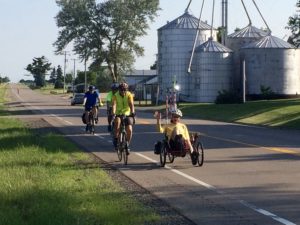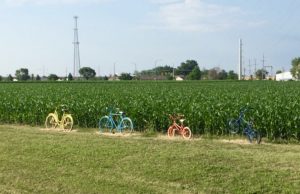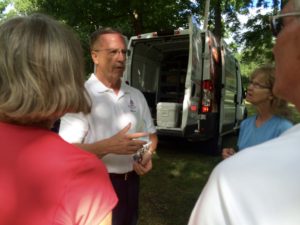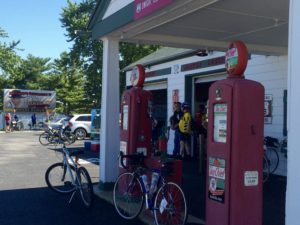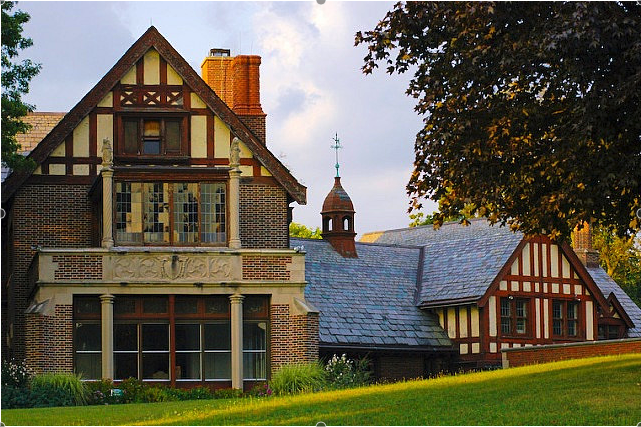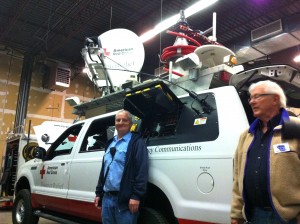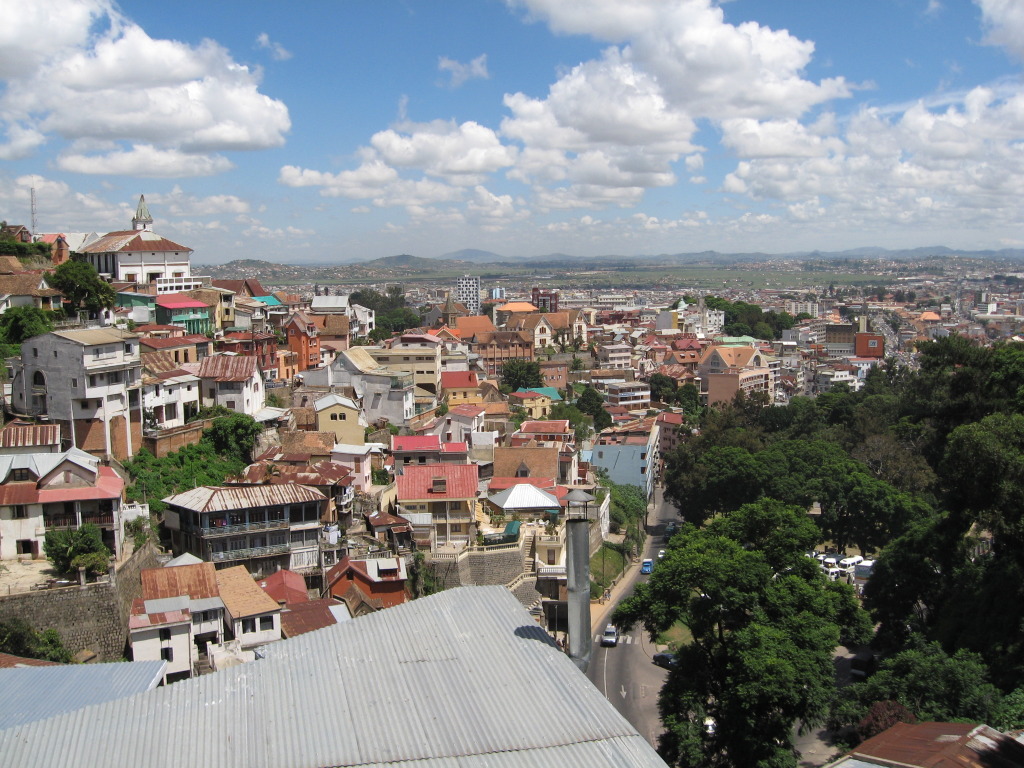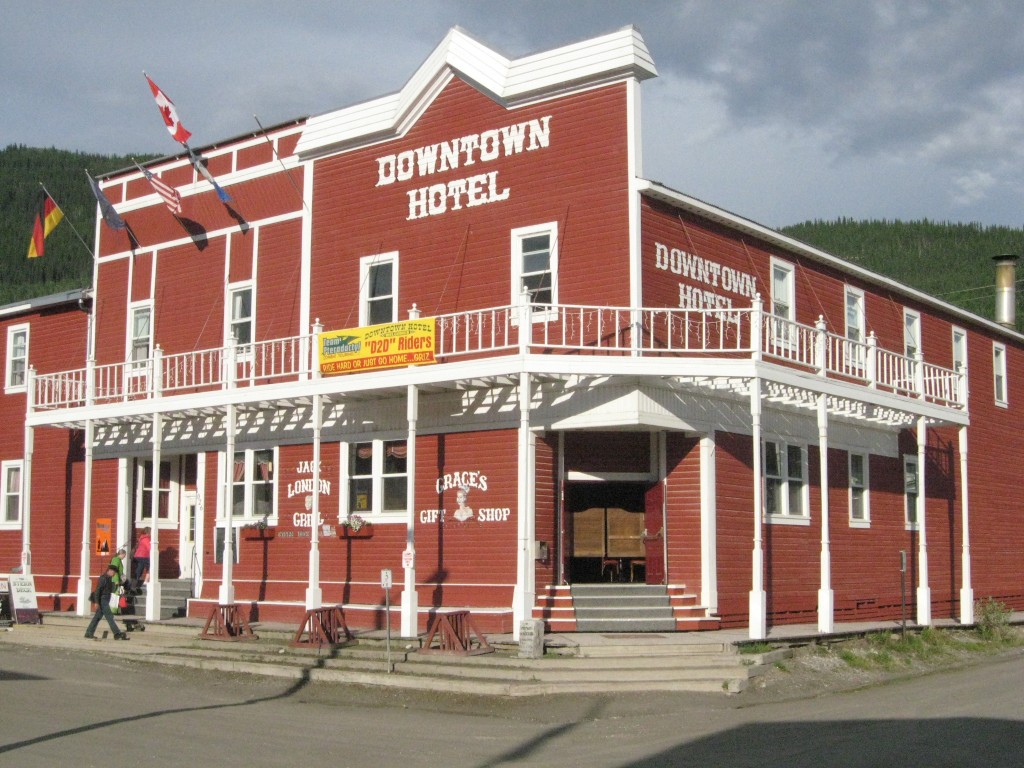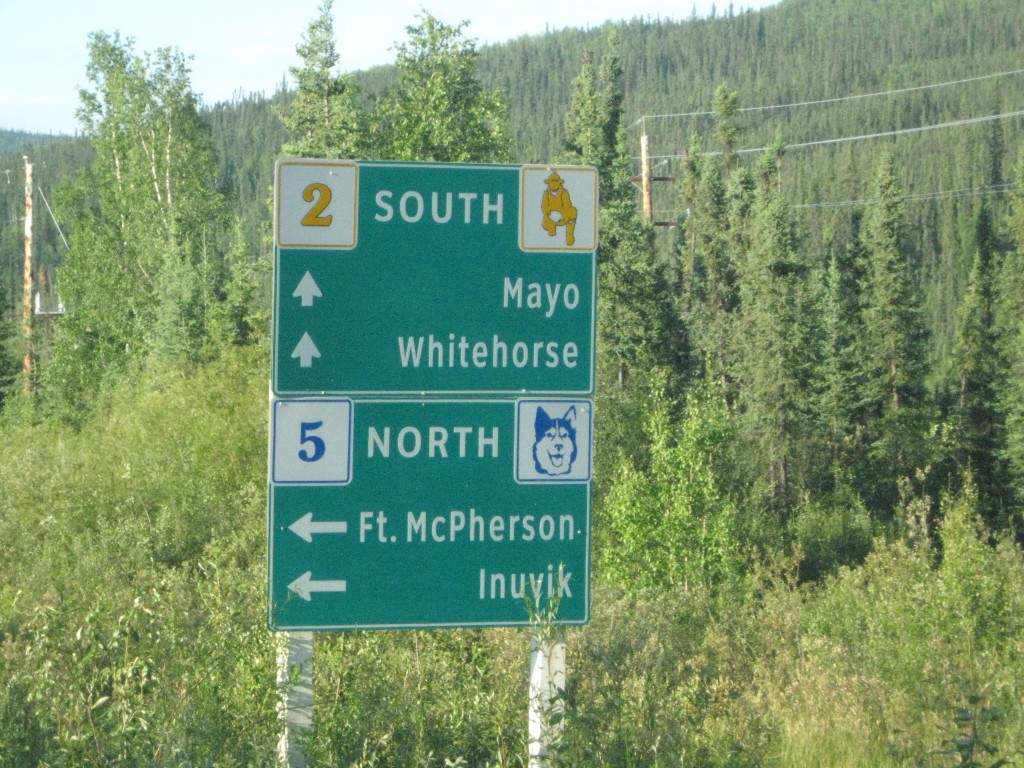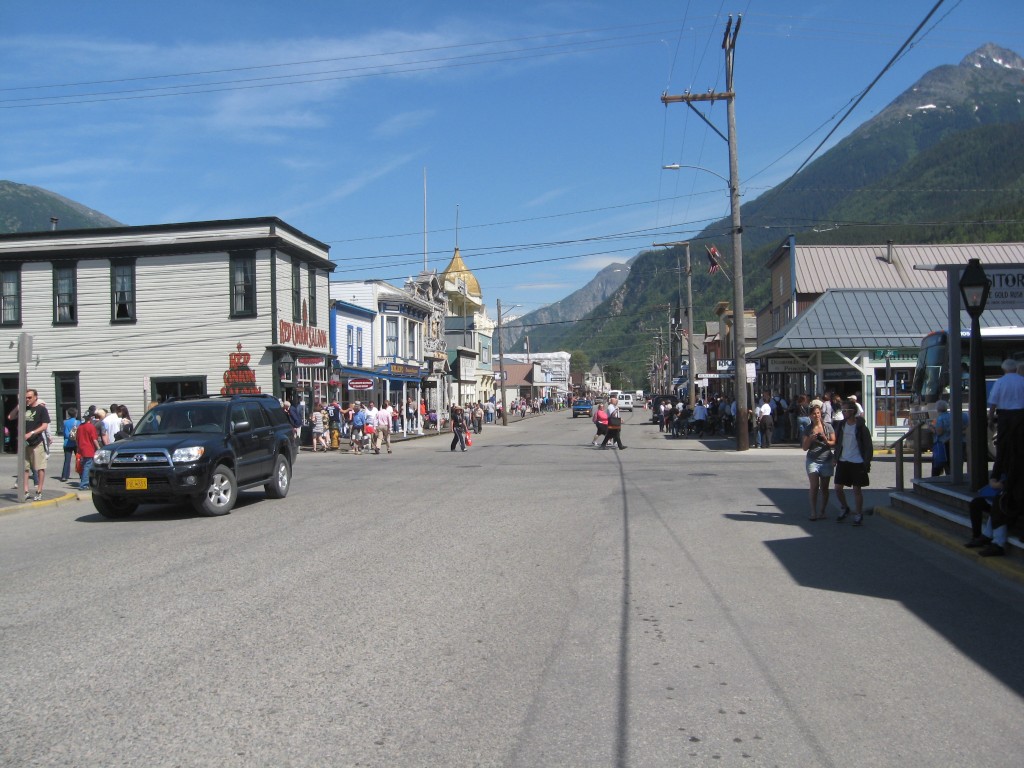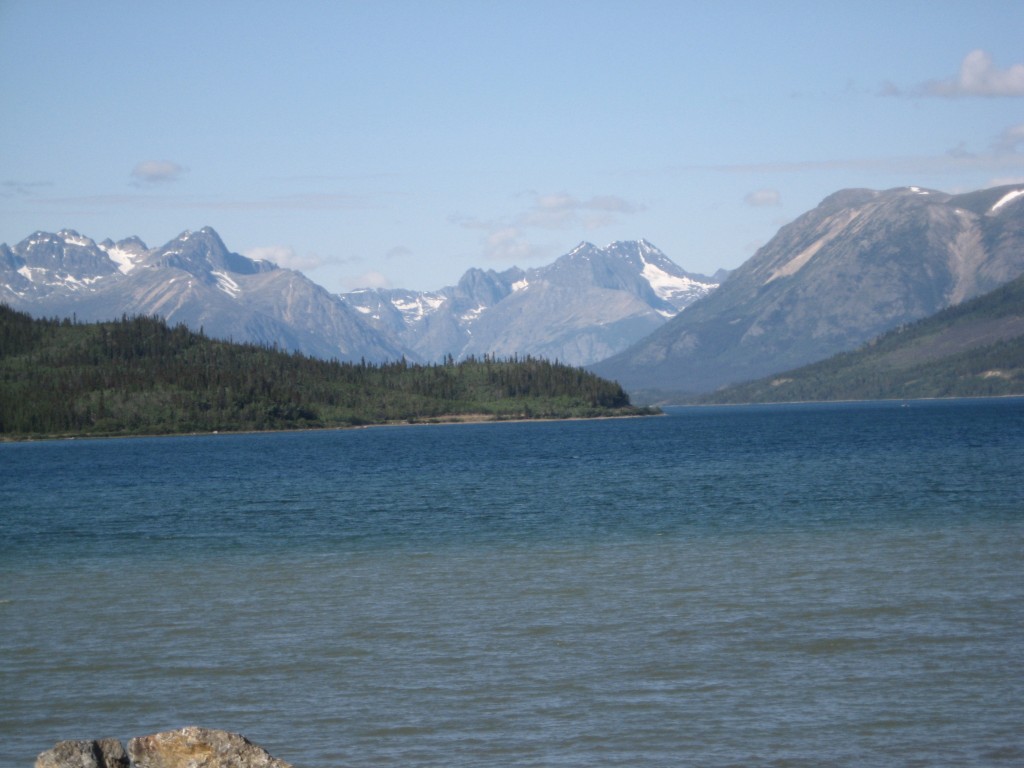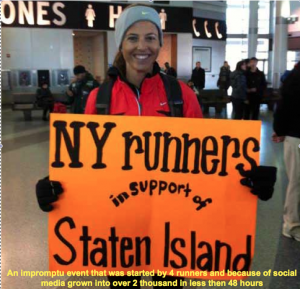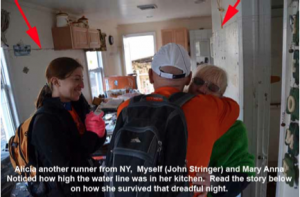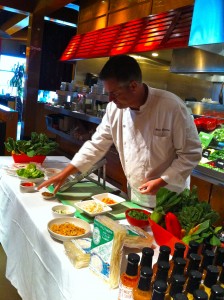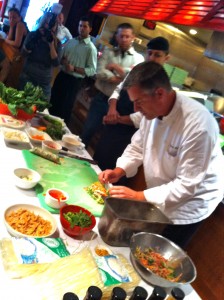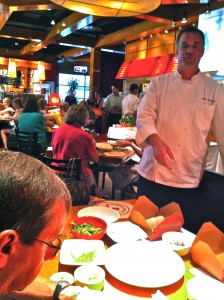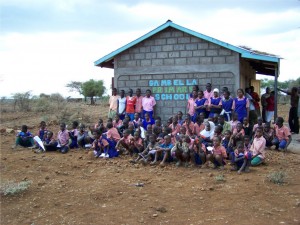Day 1 – Coal City to Oglesby
Category Archives: Beyond
Mayslake Peabody Estate in Oak Brook
Peabody Estate in Oak Brook, Illinois. Photo credit: Peabody Estate.
18th Annual AES Superfest Hamfest Milwaukee Wisconsin
18th Annual AES Superfest Hamfest Milwaukee, Wisconsin was held March 31, 2012. Amateur radio equipment manufactures, Amateur Radio Relay League (ARRL), Military Auxiliary Radio System (MARS), Emergency Services and Disaster Agency (ESDA), American Red Cross and local ham radio clubs were there with booths and exhibits.
Ham radio operators from Wisconsin and surrounding states attended the one day event. Volunteer examiners (VEs) were on hand with FCC tests for those so to be new hams and hams upgrading their licenses.
The American Red Cross and other disaster preparedness agencies displayed their emergency response equipment including radios.
It was a full house at AES for their annual Superfest!
Madagascar Is My Favorite Country (that I barely know)
People ask me all the time what my favorite country is. I really don’t know how to answer that; in particular: do they mean my favorite country that I’ve already been to, or the country that I most want to go to? So I usually split the difference, most attracted to countries I’ve seen a bit of, and like, but didn’t get enough time there, and want to go back! At the top of that list is Madagascar. It’s nothing like the movie. It’s not like most people’s conception of it, either. Most people assume that, because it’s so close to the African continent, that it must be predominantly African. No, not really.
Guess again. Well, since it’s so close to the Swahili coast of Africa, then it must have been an Arab entrepot. Not exactly. Madagascar was settled first and foremost by Asians, of Indonesian origin, with linguistic connections to this day, but little or nothing else—except rice, and noodles, and a certain slimness of figure. Sure, some of that comes from a Vietnamese admixture via the French, but not most, and certainly not all.
Madagascar is also one of the most expensive countries to get to, so maybe its inaccessibility is part of its desirability. It also helps if you speak a little French, since that is the language that most people will use with you, as a foreigner, as the French were the colonizers. Strangely enough, English is one of the four official languages, even though hardly anyone—except hotel clerks—can speak it.
The capital Antananarivo is equal parts Asian, French, African, and… unique, its own style. The architecture is French, but not really, while the food is Asian, but not really, while the poverty is definitely African, even if it doesn’t really look like it. That was the biggest shock, that the country was as poor or poorer than most of Africa. Watch out for pickpockets.
But the strangest sight was the last one, catching an early morning flight, and catching a ride to the airport in total blackness, around 3 a.m., when I saw literally thousands of early morning runners, clogging the roads and jogging the highways. I guess they were beating the heat. But for my early flight, I’d have never known. I’ll get back one day.v
Hardie Karges has traveled to more than one hundred fifty countries over the course of forty years. He is the author of “Hypertravel” and the seven-part series “Backpackers and Flashpackers: Guides to World Hostels.” He expects to open his first backpackers’ hostel soon.
Arctic Daydreams to Whitehorse Alaska and Skagway
I went to Alaska in 2006 and liked it so much that I swore I’d go back, so in 2011 I went to Whitehorse, across the border in Canada’s Yukon Territory. From there I figured to go up to Dawson City, only a couple degrees south of the Arctic Circle. And Whitehorse seems nice, too, at first glance, but nothing spectacular, so I decide to press on to Dawson City the next day, leaving any intimate encounter with Whitehorse for the back end, since I’d already rented the car, and felt somewhat pressed to justify the expense.
Dawson City is a bit of a disappointment, actually, though the drive up is very nice. Dawson City’s selling point is authenticity (dirt roads, plank sidewalks), and that’s a tough thing to sell. The minute you advertise it, it ain’t so authentic any more. What makes Dawson genuine, though, is the fact that what made it famous is still there, gold, and people still pan for it. It’s a bit pricey, though, in summer.
So I get the big idea to go to Skagway, Alaska, in the opposite direction from Whitehorse, though not so far. The little towns unfold in reverse order from the way up, a little cluster of people wherever a river crosses or a road divides, anywhere a need might arise—Stewart’s Crossing, Pelly’s Crossing, Carmacks and Moose Creek, roads going places where until 1955 only a stern-wheeler could go. That’s 1955, mind you, NOT 1855.
But I learned before in Alaska that the northern reaches were less spectacular than the southern coast, and the same holds true here. The drive from Whitehorse to Skagway starts off splendid and becomes spectacular approaching the US-Canadian border. The lakes here are a color that I’ve only seen previously in the Caribbean, due to the reflective shallow bottom, no doubt. And the border crossing itself is about as exotic as anything I’ve seen this side of Kosovo, too. I’m sure that in the wintertime it’d only be more so.
Skagway is nice, but more of a typical tourist trap, if that’s where the line of authenticity gets drawn. Ferries and cruise ships disgorge passengers here daily, leaving dollars in coffers and lives enriched along this little strip of America connected to itself only by water. This was one of THE prime places to be in the world not much more than a hundred years ago, as gold was discovered up around Dawson City and this was on the route there. So I find a nice hostel in Skagway—everything but the WiFi—and spend the night. Again, one day is about enough, especially since the meter’s ticking on the car.
I get up early the next day hoping to find a bear up and at ‘em looking for breakfast, and sure enough, I find one, walking down the country highway as if it’s his own. The border’s no hassle on the return, either, out here in the long lost lonesome, one of the world’s most beautiful border crossings, no doubt. But it feels good to be back in Whitehorse, almost like home by now. I even keep the car, to explore the immediate environs, splayed out for miles in every direction. You can have the tourist traps. Whitehorse has few tourists, but many subtle pleasures. It even has Indian pawn. That’s authentic. I’m a lousy tourist, but a better traveler.
ANNOUNCING THE PUBLICATION OF “BACKPACKERS & FLASHPACKERS IN WESTERN EUROPE: 500 HOSTELS IN 100 CITIES IN 25 COUNTRIES
Hypertravel Books is happy to announce the publication of “Backpackers and Flashpackers in Western Europe: 500 Hostels in 100 Cities in 25 Countries,” written by Hardie Karges, author of “Hypertravel: 100 Countries in 2 Years,” and the first in a series of guides to the world’s best hostels. For those of you who don’t already know it, hostels are the biggest thing that has occurred in decades for budget travel. Just when it seemed like international travel was an activity increasingly reserved for the wealthy among us, the explosion of hostels in the last few years has once again leveled the playing field and made travel possible for almost anybody and everybody with the desire and the disposition. Accommodations ARE the most expensive part of travel, after all.
Hostels have long been around, of course, at least in Europe, but those were youth hostels. These are hostels for backpackers, and “flashpackers,” too, their more upscale urban cousins. There’s a world of difference. Now Internet is a standard feature, computers available for free or for rent, and many a flashpacker with smartphone or laptop. It’s not just Europe now, either, or just youth. It includes the whole world, and it’s a way of life. If it’s a cool place to visit, then there will probably be a hostel there by now, staffed by local people, all with at least a working knowledge of the English language. You can easily organize a trip and stay in budget hostels the whole way the whole time now. This book will help. It will also tell you the brief history and major attractions of each place, too, in addition to some basic “how-to” for newbies.
And that’s just Western Europe. Eastern Europe is the most exciting destination to open up for independent travel in decades. The food is tasty, the people are friendly, and the variety is breathtaking. At first glance Poland and the Czech Republic may seem like extensions of their Western neighbors, but they are extensions that were frozen in time for fifty years before the Iron Curtain finally fell some twenty years ago. Communism did nothing if not stop the clock; and what you find now are perfect specimens of old Europe, the one with the stunning landscapes and the picturesque city centers. Places like Russia and Romania are something else entirely, of course, and exotic Turkey is one of the most popular destinations in the world. Best of all, prices are cheaper than in the West, AND… very few require expensive time-consuming visas now. And yes; there are hostels, lots of them, the best among them now documented and catalogued for your convenience. “BACKPACKERS & FLASHPACKERS, 500 HOSTELS IN 100 CITIES IN 25 COUNTRIES OF EASTERN EUROPE” is due to be published in January 2013.
And that’s not all. Already in the works are hostel guides to Asia and Oceania, i.e. Australia, New Zealand, and the islands of the South Pacific, both with the same “500 Hostels” concept, with some important differences peculiar to the regions. And if there were surprises and revelations in the two European editions, then there are even more in the two Far East editions. The hostel concept was originally a European one, after all, and with the exception of Australia and New Zealand, there is none of that really to be had in the Asia/Pacific region. But there are hostels, I can assure you, and ‘real’ ones, too. And yes, the ‘flashpacker’ upgrade is also in effect over there, no matter how difficult the task for an easterner to fathom the minds of the young hip American or European. It’s mind-boggling. Those two books are due to be published in Spring 2013.
Did you ever wish there were a travel guide that included only the hip cool artsy fun places in a given region or country and didn’t bother so much with those cold gray cities best known for their output of coal, steel and industrial pollution? These books facilitate that. One of the happy offshoots of this series, indeed, is that now there is a quantitative standard to decide how “cool” a place is—and therefore maybe worth visiting, at least maybe more than some others, and maybe even hanging around for a while. Just count the number of hostels. As it has been up until now, you could read a 500-page guidebook, and still not necessarily have a good feel as to which places were “hip,” genial, sympa, anything but a boring, hurly-burly generic city, cold but not cool. Now you do, because hostels are nothing if not cool. C U there.
Follow Hardie Karges Backpackers and Flashpackers blog.
Sandy Cancels New York Marathon and Runners Help Staten Island
Arriving on Friday morning at La Guardia Airport and ready to run the New York City Marathon, it was slated to be my 16th. Drop the bags at the hotel and started off to the expo to pick up my race materials. It wasn’t until after that I received a text from a friend that informed me that the marathon had been canceled. It was the right decision at the wrong time! Spending all that time and money and not to run was a major disappointment, to say the least.
However meeting people from the UK, France, Italy and was told how they where out thousands of dollars due to the cancellation. And not to forget the people who lost love ones and suffered so much personal tragedy, I really couldn’t hold on to my self-pity for much longer.
The next morning I joined a group of volunteers to help clean up a local park. That was OK, it really wasn’t what I had in mine.
We discover Staten Island was a very hilly place to run. About 3 miles in we started to see the first signs of stress, a line of cars that wrapped around a few blocks and 30 or more people standing with gas cans in hand waiting their turn for gas at the pump. Yet I didn’t think we where still in the mist of the trouble.
Then a fellow runner who told me about a social media event that was really spreading quickly. It was a Staten Island run to relieve effort. Perfect! I wanted to get a run in anyway and helping people on Staten Island that really needed the most. From what I was told the people of Staten Island are the forgotten people of New York City. They are given the lowest priority on the city budget and the last to get much help.
This whole idea stared with a group of four runners that formed a Facebook page and by that night they had 400 likes. Within 24 hours it increased to 4 thousand! They instructed us to wear our official orange marathon shirts, fill back packs with food, clothes and meet at the lobby entrance to the ferry. Next they subdivided us into groups, not by pace but miles. We could do as little as 3 and as much as 14.
We reached the first drop zone at mile 7. They had lot of supplies there but we were told more was needed up the road about another 2 miles. We were warned that it was very bad and the damage was much worse. A few runners didn’t want to go further. I said what’s another 2 miles? We where going to do 26 anyway! They asked if we could take some more supplies with us. Our pack grown by another 10lbs. I was proud of my fellow runners!
Within the first half mile out of the drop zone we couldn’t run on the sidewalk much longer. We gotten into an area that was torn apart from high winds and water, debris was everywhere, down power lines where common.
There where many small drop zones along the way and we did notice the Salvation Army which and we dropped a few supplies off there.
Our final drop zone was very large and was run by the Red Cross and National Guard. We drop the rest of our supplies with them. They ask if we could distribute food and water into the neighborhood and of course we gladly agreed to help in any way we could. At this point we had separated into much smaller groups so the four of us set forth into the streets. We kept on asking people if they needed any food or water, the first round of supplies went fast.
Brian was a local and he told his story of his father and mother both in there 70’s. How they escaped from the flood waters that engulfed their home. How the water raised so quickly that the only means of escape was to punch a hole in their roof by means of a two by four. He then asked where I was from I told him Chicago, he began to cry. I hugged him and patted him on the back and told him “We are here for you guys.” Also his broth- er Jim and I chatted a bit about Staten Island and New York and after 20 minutes letting them vent they said “God bless you guys!”. We got many of those type of responses all day long.
We gathered forces with Jim and Joe a local runner from NY. They ask if we could lend a hand with some water damage removal. There we assisted Mary Anna who was 70 years old trying to clean up her shed. The National Guard was there earlier and wanted her to go the hospital due to her high blood pressure, she refused.
Thus Jim and Joe were helping her getting trash out of a very damaged shed and to the curb. Five guys are better then two (keep in mind where all in our running outfits and didn’t think we where going to help in this fashion).
Alisa duty was to keep Mary Anna calm and out of the way of all the mud and the wet soaked items. We took all the items to the curb along with the busted down shed and part of a 12×8 foot wall that floated into her back yard. You could tell by the inside of her home the water reached to the top of her kitchen cabinets.
She told us how she got out of her house. The water was so high she said that she couldn’t get out of the door and then she noticed a rescue boat. She used a flashlight to signal from her kitchen window only to find that the boat was filled. She then took a plastic tray and floated out of the window she hung on to the outside gutter. She the noticed a blazing fire that was only a block away. She was then rescued a short time later.
We all received a very big hug from her. We did find that house that she talked about. It looked like the fire was started from a downed power line. It was completely gutted and I can only hope they survived. So now the six of us started heading out before it got too dark.
Running back we received a lot of honking horns, waves, and thumbs up from passing cars. One guy walking shouted out “You guys are our my heroes” although I really liked his sentiment, it wasn’t deserved. Still from a New Yorker that said a lot ! This run wasn’t my PR (personal record) but it was my personal best!
Big Bowl Restaurant in Schaumburg Hosts Summer Roll Class
Big Bowl in Schaumburg treated their best customers to a summer rolls making class. When we eat lunch at Big Bowl, we always order these appetizers. Big Bowl Executive Chef Marc Bernard taught the session, assisted by Schaumburg Big Bowl Executive Chef Eddie Gomez.
We sat in tables of four with prepared fresh vegetables in front of us. Marc described the seasonal ingredients Big Bowl uses and their mission to serve local, organic and eco-friendly foods when possible. Marc highlighted the vegetable choice for make your own stir fry meals and noted where each of these items came from.
Big Bowl sources produce from four local farms and many of which use organic methods. Marc recently bought a five acre farm that he and his partner work. Some of the vegetables Big Bowl serves are grown at the farm. Big Bowl Schaumburg General Manager Sean Schorp told me the staff at Big Bowl leased a two acre farm and they work the land themselves for more local produce. “We are growing garlic, cilantro and other foods for our restaurant. The only time it is hard to get amazing fresh produce is the dead of winter,” he continued. “Some farms are installing hot houses.”
Marc described each summer roll ingredient beginning with the package of hard rice paper or spring roll skins. We also had seasoned noodles, pickled vegetables, carrots, bean sprouts, red bell peppers, seasonal lettuce and chopped peanuts at our tables. Marc combined flat rice noodles with sesame seed oil, peanut oil, lime juice and fresh herbs. We saw how salting the vegetables and letting them sit draws out water and condenses flavors.
Marc dipped the rice paper skins, a hard plastic like disk which softens up when dipped in water, and stretched the sheet out on the workspace. He layered the fresh produce in the center and demonstrated the rolling technique. He pulled the rice skin tightly over the food while compressing the rest of the roll.
Then it was our turn to make Big Bowl’s famous summer rolls. Each of us started with a rice paper skin and filled the sheet with noodles and veggies of our choice. We rolled the rice paper over the colorful mix with varying degrees of success.
At the end our class, Big Bowl treated us to their tasty summer rolls prepared by Big Bowl’s chefs and served with a variety of tasty homemade sauces. Big Bowl Schaumburg is part of Lettuce Entertain You Enterprises with 31 restaurant concepts.
3 Easy Ways You can Change the World
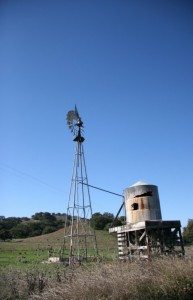 How would you like to change the world–right now?
How would you like to change the world–right now?
It’s actually quite easy.
You don’t need special credentials. Any ordinary person can do it.
Six ordinary families from Algonquin have changed the world, at least for one village in Kenya, and we invite you to change it with us.
Before we get to how you can change the world with us, here is a little information about what we’ve done so far. Over the past three years, through our partnership with Global Hope Network International, the village of Gambella, Kenya, has seen remarkable transformation. Here are just a few:
- The village previously had no school, and would meet under a tree whenever a teacher would come to the village. Now they have eight classrooms, with eight teachers, and their school test scores were the best in their entire district!
- Gambella was a pastoral community, making a living off of their goats and other animals. Climate change has had a severe impact on the area though, and it is difficult to find land for animals to graze. Gambella is now learning to farm, to supplement their income and food supply.
- The nearest health facility was in the town of Isiolo, which is a 15 km (about 9 miles) walk–one way. They now have a wellness center in the village, where basic health education and needs are addressed.
What’s Next?
We have one last project that we want to help Gambella with, before we end our partnership (we believe strongly in sustainability, and not creating dependency). In order to help Gambella to increase the crops that they can grow, we need to find a way to help them irrigate more land. A bore hole was drilled for them, and when I was there last summer, the villagers kept asking me to help them get a pump to draw the water out. It is always windy in Gambella, so we are going to help them put up a windmill to draw the water out.
Get Involved
This is where you can help change the trajectory of an entire village! We have three opportunities for you to help:
- We are having our 3rd Annual Garage Sale 4 Gambella, June 7-9, and we are in need of donated items to sell at the garage sale. If we can raise $1500 at the garage sale, we have a donor that will match our sales with an additional $1500. This is our greatest need, and the easiest place for you to get involved. Simply look around your house for items to donate. Learn more about the garage sale, and how to donate here.
- We will be cleaning ambulances, and will be paid for each vehicle we clean, and would love to have you join us to help us clean more ambulances. This is tentatively scheduled for late-August. Currently, we are in the process of reading lots of handheld vacuum reviews, as we will be purchasing a few for the effort.
- We will be having a 5K Run/1M Walk for Gambella. The entry fees will go toward the windmill. The run is tentatively scheduled for mid-September.
Learn more about us, and how you can get involved, at http://algonquin4gambella.org
Hyper-Travel: 100 Countries in 2 years by Hardie Karges
I just finished reading Hyper-Travel: 100 Countries in 2 years – A backpackers Guide to the World and Soul by Hardie Karges. Reading this book is like a fast forwarding through a movie. Karges’ travel schedule is busier than airline employees. He travels through countries faster than some people change their clothes.
One of my favorite quotes: “Hyper-travel is the counting of your trip in countries, not days, weeks or months.”
This is a long book. My ecopy is over 200 pages, 8.5 x 11 size pages. The tale covers travel through 100 countries around the world. Karges groups his travel by area of the world then sets a plan to enter each country.
What I most liked about the book is Karge description of the flavor of the cities and types of food available. I am interested in the dining choices and types of dishes served in different parts of the world. I maintain a nearly vegan diet and ordering food when I cannot speak the local language concerns me. Karges eats a semi vegetarian diet including chicken and other foods not on my menu. He does make an effort to try local dishes everywhere he stays.
This is a budget travel adventure and dining is on the cheap. For me, these are the best places to get a real flavor for a region. Other challenges included finding low cost accommodations preferably with internet access. For those traveling abroad, be aware that internet service in most of the world is not as ubiquitous as it is in the United States.
Karges often talks about his wife Tang, an American of Thai descent. As a single traveler, he talks about being on his his own, away from his wife and his stressed marriage. Most of his lodging came with TVs and the book often includes comments on local television shows.
I admire Karges vast knowledge of each countries Visa or other entry requirements. Understanding the rules for 100 country, particularly with political changes was quite a feat. Also understanding with cash greases the political wheels is crucial.
Here is an example of the amount of ground covered in one of Karges’ trips. “East Mediterranean early 2009: February 16, 2009–April 16, 2009. This trip covers travel in the countries of Italy, Tunisia, Malta, Greece, Albania, Bulgaria, Serbia, Kosovo, Montenegro, Croatia, Bosnia, Slovenia, Switzerland, and France in the eastern Mediterranean.”
Each visit to a city includes an overview of the area and Karges perspective on the local culture. Scenic vistas, interesting foods and citizens are described. Here is a sample from “Tale Of Two Beaches: Cannes & Rimini”.
“Coming to France from Italy is definitely another dimension. The language becomes soft and swirly instead of hard and crispy. So does the food. The pizze and panini (that’s plural, Homeboy; trust me) become crepes and quiche. It’s raining when I first arrive, but the sun comes out almost immediately in some sort of sympathetic magic. The Africans here are selling sunglasses, not umbrellas. I think they’re all from the same hometown (the Africans not the umbrellas).”
Hyper-Travel: 100 Countries in 2 years by Hardie Karges is an adventure book for both who travel frequently and those who prefer to stay at home. Soak up the flavor of over 100 counties and fill you thirst for adventure.

